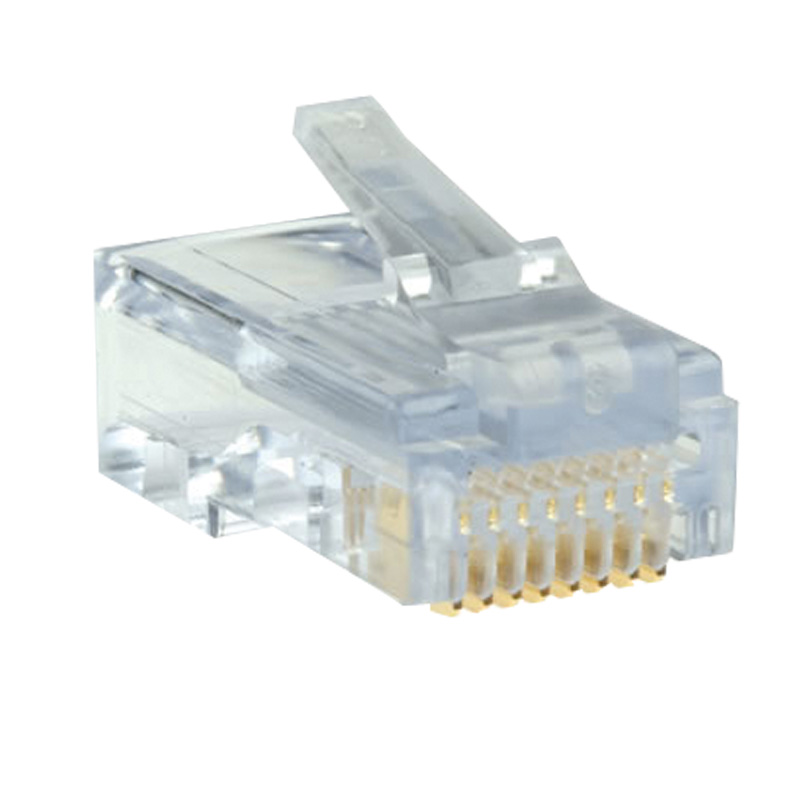

- WHICH PINS IN AN RJ45 CONNECTOR ARE USED TO TRANSMIT DATA HOW TO
- WHICH PINS IN AN RJ45 CONNECTOR ARE USED TO TRANSMIT DATA GENERATOR
- WHICH PINS IN AN RJ45 CONNECTOR ARE USED TO TRANSMIT DATA FULL
WHICH PINS IN AN RJ45 CONNECTOR ARE USED TO TRANSMIT DATA GENERATOR
For instance, in wiring that has to pass over or near any sort of power generator or heavy machinery. STP is typically reserved for use in areas with extreme levels of electromagnetic interference. As a result, it hasn’t seen as much widespread use as UTP. STP is also more fragile than its UTP counterpart – the shield is prone to tear if the wire is bent excessively.

WHICH PINS IN AN RJ45 CONNECTOR ARE USED TO TRANSMIT DATA FULL
Moreover, the STP wire must also be coupled with shielded 8P8C connectors to ensure the additional shielding is present throughout the full end-to-end spectrum of the wire.Īs you can imagine, STP is the more expensive variant. That said, if any part of the shielding is damaged, or if the wires aren’t perfectly grounded on either side of the connection, the shielding can act as an antenna and introduce additional electromagnetic noise from stray radio waves and Wi-Fi signals in the air. This helps contain and isolate the electromagnetic noise that occurs when signals travel through a wire. STP has additional shielding around each pair of wires and then one more shield around all four pairs. These attributes typically make UTP the preferred choice. UTP is less expensive, more (physically) resilient, and more flexible. We will explore these in more depth later on in this article. There is no additional shielding against electromagnetic noise, but none the less, UTP can carry a signal reliably due to innate features of twisted pair wiring. This is the more commonly deployed variation. Notice in both cases, the pairs of wire create four distinct channels or lanes through which data will be sent. There are two prominent types of Twisted Pair wiring, a Shielded variant and an Unshielded variant: The pairing of the wires is very important, and we will look at why later on in this article, but the short version is it helps negate and minimize the effects of Crosstalk and Electromagnetic Interference (EMI). This creates four pairs of wire, each of which serve as a channel through which data can be transmitted. The eight individual wires are paired in sets of two, and each pair is twisted around each other. Twisted Pair wiring is a type of cable which uses eight individual wires in a bundle. There are also other Registered Jack specifications as well that define a plethora of other combinations of wires and physical connectors. There is also a RJ61 standard that uses the 8P8C connector, but specifies a different ordering to the wires inside. Often the term RJ45 is used to refer to the 8P8C connector itself, but this is incorrect. Notice the only real difference between the two standards are the colors of wire pair 2 and pair 3. Specifically, RJ45 defines two wiring standards: T568a and T568b: Registered Jack standard number 45 specifies the amount of wires in the cable, the order in which they appear, and the usage of the 8P8C physical connector. It also defines the design and dimensions of the clear plastic plug that terminates the cable. This is what regulates that there are 8 Positions and 8 Contacts. This is the specification that governs the physical connector on either end of an Ethernet wire. Terms like Ethernet, Twisted Pair, RJ45, Shielded, and Unshielded.īut what do each of these terms mean? How are they different from one another? Are any of these terms being misused? To put it bluntly, yes – these terms are often misused. If you’ve been around the networking world for even a short duration, you’ve heard lots of terms that are thrown around referring to cabling. We’ll start off with a disambiguation of all the terminology that gets thrown around when discussing physical cabling, then answer a couple basic questions: Why do we need crossover cables vs straight-through? What exactly is Twisted Pair? How is a single bit transmitted across the wire? Finally, we’ll wrap things up with a look at the standard for Gigabit Ethernet. But in light of our mission statement, we thought the topic of Ethernet Wiring deserved a bit more depth. Initially, this article was meant to just cover the basic differences and use-cases for Crossover cables and Straight-through cables.
WHICH PINS IN AN RJ45 CONNECTOR ARE USED TO TRANSMIT DATA HOW TO
It also determines how to interpret those bits into meaningful frames. It describes how to send bits (1s and 0s) across each wire. Ethernet is a family of specifications that governs a few different things: It covers all the different wiring specifications (10BASE-T, 100BASE-TX, 1000BASE-T, etc…).


 0 kommentar(er)
0 kommentar(er)
